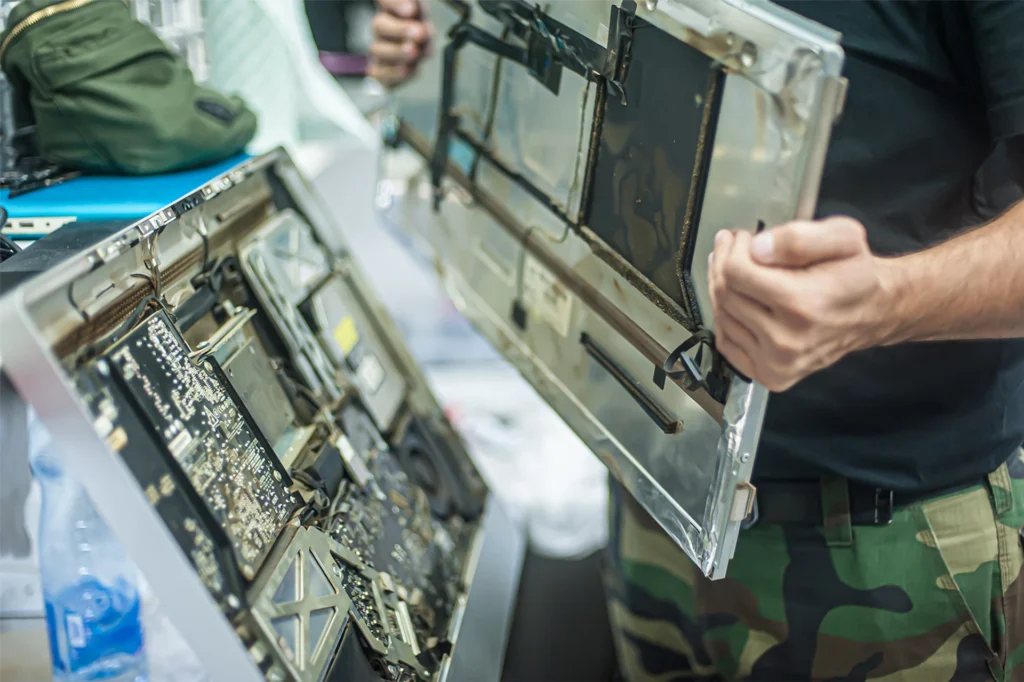More information can be found in the new White Paper: Advanced Microelectronic Packaging and Fiber Optics Technologies for the Military, Defense & Security Industries PDF (EN)
”As modern military systems become increasingly compact, autonomous, and software-controlled, the demand for robust microelectronic integration and secure optical communication is growing exponentially. In this context, advanced microelectronic assembly and connection technologies, fiber optic technologies, and DIE bonding are no longer optional, but mission critical. We have therefore specialized in offering state-of-the-art DIE bonder solutions and manufacturing services that meet the specific requirements of these sectors.”
Daniel Schultze, Managing Director of Tresky GmbH
In the modern defense industry, highly specialized electronics are the backbone of almost all military platforms, from combat aircraft and drones to guided missiles, sensor and communication systems, and portable soldier systems. A key technology in the production of these high-performance electronics is DIE bonding, that is, the precise and permanent connection of semiconductor chips to carrier substrates, PCBs, or housings. This connection must be mechanically stable, thermally conductive, and electrically reliable, especially under the extreme operating conditions of military systems.
These military systems must function reliably under extreme heat, high humidity, and heavy mechanical stress. DIE bonding technologies such as thermocompression bonding, epoxy bonding, eutectic bonding, sintering, and photonics bonding can be used to create connections that meet these requirements. The choice of bonding method has a significant impact on the thermal performance and reliability of the end device.
“Our DIE bonders are designed for precision and efficiency, ensuring that components function reliably and optimally even under difficult conditions. This is crucial for applications ranging from communications to weapon systems, where any failure can have serious consequences”
Daniel Schultze
But the choice of materials also plays a decisive role. For example, the use of advanced materials such as silver sintered pastes can further increase thermal conductivity. With values above 200 to 250 W/mK, these pastes are particularly suitable for high-performance military systems where reliability and efficiency are crucial. This improves thermal management, reduces the risk of overheating, and ensures performance under demanding conditions.
“DIE bonding also plays an important role in the miniaturization of modern defense electronics and enables the development of advanced systems with high functionality and compact design.”
Daniel Schultze
Applications such as unmanned aerial vehicles (UAVs), guided missiles, portable radio devices, and assistance systems for soldiers require maximum performance in the smallest possible space. The increasing demand for miniaturization is driving the introduction of innovative assembly technologies such as direct chip mounting, which eliminates the need for traditional housing technologies. Packaging technologies such as chip-on-board (CoB) and system-in-package (SiP) enable manufacturers to produce compact, highly integrated assemblies that combine multiple functions in a single module. Bonding technology, for example, facilitates the integration of multiple DIEs (semiconductor chips) into a compact unit that enables efficient signal processing, communication, and power supply control. This integration not only saves space but also increases the overall performance and reliability of the systems.
DIE bonding is also indispensable for high-frequency and radar applications operating in the GHz frequency range. Systems for reconnaissance, target tracking, and electronic warfare place high demands on electrical performance, signal integrity, and the minimization of parasitic effects. To meet these requirements, micrometer-precise positioning of the DIEs is essential. The quality of the DIE connection is particularly crucial in radar systems with active electronically scanned arrays (AESA), transmit/receive modules, and satellite communication units. Errors in the bonding process can lead to significant performance losses and impair signal processing and transmission. A reliable DIE bonding process is therefore essential for the effectiveness and efficiency of modern defense electronics.
DIE bonding also plays an important role in the fabrication of fiber optic technologies, which have become a central element of modern defense systems. Fiber optic technologies enable fast, interference-free, and secure data transmission, even under extreme conditions, making them essential for networked battlefields, sensor technology, communication systems, and weapon systems. A major advantage is their immunity to electromagnetic interference and EMPs. They are used in precision weapons, LIDAR systems, infrared-based target acquisition systems, and in the “fly-by-light” control systems of modern aircraft and vehicles, for example. Fiber optic systems also ensure secure communication and high eavesdropping security in drones, reconnaissance aircraft, and mobile and stationary command facilities.
“Since DIE bonding must meet the highest quality standards, special systems such as our DIE bonders are used. As these processes are constantly evolving, in-depth expertise is essential to ensure a reliable DIE bonding process in the defense industry.”
Daniel Schultze
Overall, DIE bonding is much more than just a production step. It is a central component of modern military electronics and contributes significantly to the performance, compactness, robustness, and service life of systems that have to function under the toughest operating conditions. Without these reliable processes, many advanced defense systems could not be realized.
